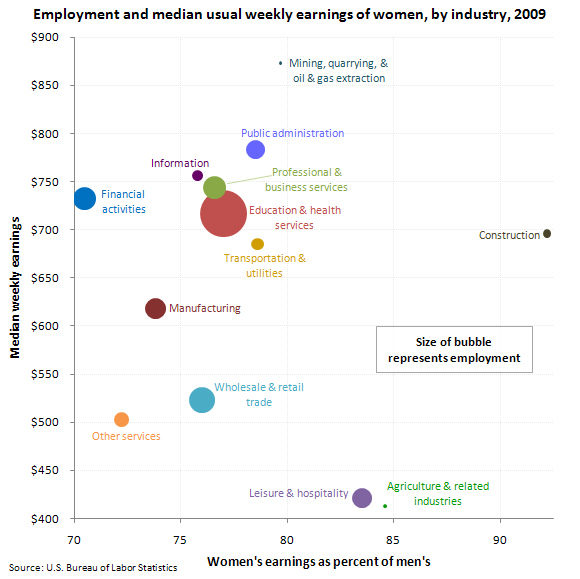Men’s Wages Dwarf Women’s Across All Areas of Labor
Although it’s common knowledge that women continue to bring home paychecks much smaller than men, the details of this breakdown are lesser known to many of us.
The Bureau of Labor Statistics has released illuminating statistics about women’s pay. The information portrays not only what professions women work in, but within those, how women are compared in comparison to males within the same field.
Women who worked full time in wage and salary jobs had median weekly earnings of $657 in 2009. This represented 80 percent of men’s median weekly earnings ($819).
Seventeen million women workers were employed in education and health services, making that the most popular area of work for women. Although women undoubtedly have a lot of power within these fields, they still do not make nearly as much money as the men in their field. In these female-dominated jobs, women still only bring home about 80 cents for every man’s dollar.
Median weekly earnings of women employed in mining, quarrying, and oil and gas extraction ($873) and public administration ($783) were substantially higher than the earnings of their counterparts employed in leisure and hospitality ($421) and agriculture and related industries ($413).
Construction continues to be a male-dominated profession; however, women construction workers can expect that their paychecks are more equitable than workers in other fields. Women’s-to-men’s earnings ratios were higher among women employed in construction (92 percent). Women in agriculture also saw higher equity, as their wages represent 85 percent of men’s.
What field can a woman enter and expect that she and her fellow women co-workers will be earning exactly the same as men?
This area of labor does not exist yet in the United States. Surely, it’s a matter of time. Recruiters, where will this landmark change occur?


